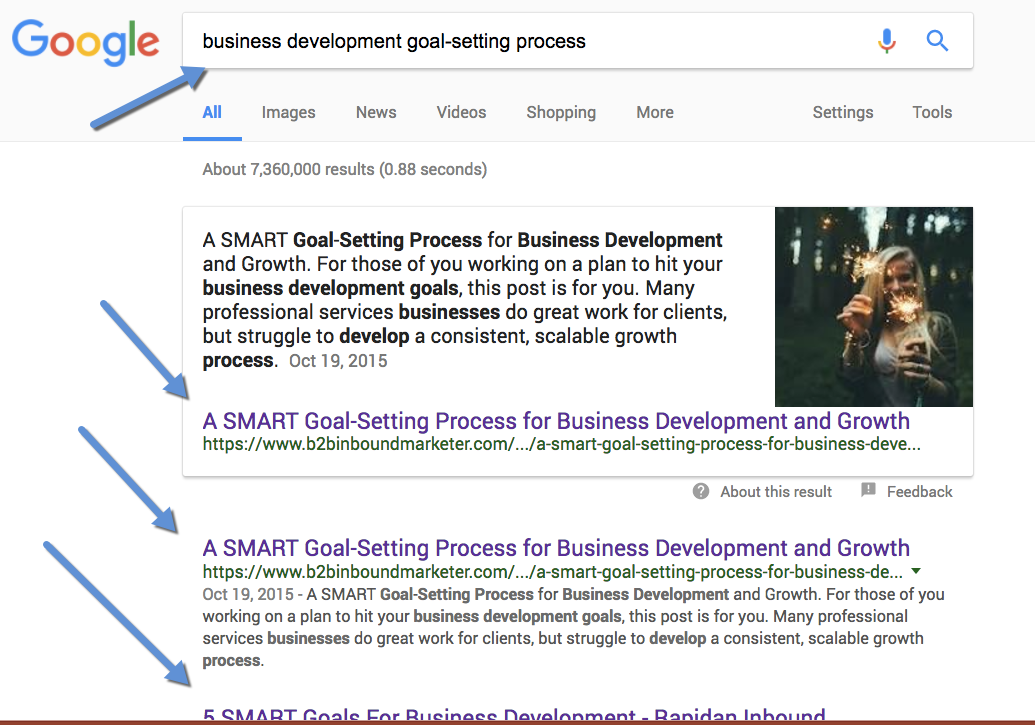
I've got some news for you that may be a bit surprising - you will never sell anything to your prospects and customers. The reality is that your prospects and customers buy from you and "selling" them will have little to no impact on whether or not they buy from you.
Sales enablement is a series of actions you take that make it easy for people to buy from you. An effective sales enablement process:
-
Makes it easy for qualified buyers to find you when they're in an active buying cycle.
- Qualifies leads so that you focus on those with the highest probability of buying from you.
-
Educates all participants in the buying process and addresses their unique concerns.
-
Reduces the element of risk for buyers in their buying process.
-
Creates an atmosphere of trust in which buyers seek out your expertise to help them solve business problems.
In order to grow your company in the modern business environment, it's important to structure your sales and marketing processes to embrace the concept of sales enablement.
Buyers can't buy from you if they can't find you
Remember the key element of retail selling from the old brick and mortar days? It was location - if you're store was not easily visible and accessible, few people would take the trouble to find you. A similar concept applies to modern knowledge-based businesses like professional services and technology companies. Buyers need to find you in order for you to make the shortlist in their buying process.
The old school way to get on buyers radar screens was to blast email lists with self-promotional messages and cold-call hundreds of potential buyers in hopes of getting one or two meetings. These methods simply don't work anymore. The most probable outcome of these approaches is that your email or voicemail will be deleted without being heard or seen. Worse yet, if you use these tactics, you will likely be labeled a spammer by the email providers making the deliverability of your messages impossible.
So just how can you make it easy for buyers to find you?
- The foundation of an effective sales enablement process is a customer-centric website. The Corporate Executive Board found that the average buyer completed 57% of their buying research before ever contacting a salesperson. Most of this research is happening on your website. If you're not giving the buyer the information they need and making it easy to find, it's highly unlikely that they will buy from you.
- Creating buyer-focused content so that buyers find you when they search on Google. This is not an overnight proposition - you're not going to publish a blog post and be ranked #1 on Google the next day. However, if you consistently publish quality content focused on your target market niches, you will be rewarded with high Google rankings and a consistent flow of qualified buyers to your website.
While many business executives don't invest in content marketing because they don't see an immediate return, those who do are eventually rewarded with a continuing flow of potential buyers to their websites. Here's an example of how our content drives a monthly flow of new qualified prospects to our website.

Sales enablement considers all participants in the buying process
The reality of modern B2B sales is that the buying process is taking longer and more participants are involved. It's no longer enough to play golf with the CEO and ignore other participants in the buying process. An effective sales enablement process takes all players in the decision-making process into account and addresses the unique concerns of each.
A typical buying process will include the following roles.
- The economic buyer is typically a C-level executive who has the power of the purse strings. She is typically concerned with how your solution will impact her high-level business goals. They're interested in how your solution can help them generate more revenue, reduce expenses or reduce the administrative burden.
- The user buyer is the person or people who will be using your solution in the course of their jobs. For employee benefit consulting, an HR director would typically be a user buyer (although he may be the economic buyer in a large organization.) For cybersecurity consulting, an Information Security Officer would likely be a user buyer (but again, could be an economic buyer.) While the user buyer is concerned with overarching organizational goals, they are also concerned with how your solution will affect them personally. Their concerns include
- Ease of implementation of your solution
- The ongoing administrative impact of your solution - hopefully you will make their lives easier!
- How your solution impacts them personally. Will you make them look good to the boss and help further their careers? Will you create more time for them to spend with their families?
- The Technical Buyer is the person who makes sure that purchasing rules defined in corporate governance procedures are followed. These buyers typically are purchasing managers. Don't think that there aren't buying rules in SMB companies! For example, many corporate governance policies state that an organization must solicit bids from 3 competitors for purchases over a set dollar amount.
In today's complex buying process, the economic buyer is increasingly relying on input from user and technical buyers before signing off on a purchase decision. That's why it's so important to recognize all the players in the buying process for your solution in your sales enablement.
Corporate buying is increasingly an exercise in risk management
Making a bad purchase decision can have enormous consequences for a business. The wrong choice can result in businesses missing revenue targets, losing customers and getting people involved in the decision fired. You can bet that your buyers are considering these risks in their decision-making processes. That's why it's so important to reduce the element of risk in your sales enablement strategy. Here are some things you can do to reduce perceived risk in your sales enablement process.
- Trust is the critical element in starting and maintaining good business relationships. Every thing you say and do should have the goal of creating trust with your prospects and customers.
- Use content to educate all of the players in the buying process. The more your buyers know about their problems and how you approach solving them, the less risk they see in working with you.
- Use content to show economic buyers how solving a problem can impact their high-level corporate goals.
- Use case studies to show user buyers how you've helped others solve similar problems.
- When you're engaged in an active buying process with a potential customer, act as a consultant, not a salesperson. Show them that you understand their unique problems and the pros and cons of various solutions.
- Use trust elements on your website to reduce perceived risk from the very beginning. Trust elements are things like customer logos, testimonials, industry affiliations and awards that show your expertise as validated by third-parties.
- When possible, use guarantees to show that you're confident that your solution works.
The B2B sales paradigm has shifted from selling to enabling qualified prospects to buy from you. This is the essence of sales enablement. Those that stick to the old school hard-sell routine will not be successful because they are not creating relationships based on trust. By using the tactics described above and monitoring how buyers interact with your sales enablement process, you will create a repeatable, scalable revenue generation machine.







